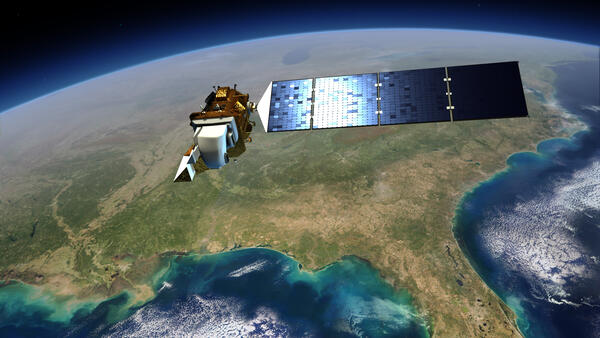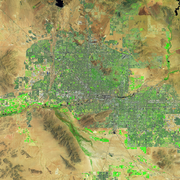Landsat Benefits, State By State
Orbiting 438 miles above the Earth, Landsat satellites capture imagery of the face of our planet. Scientists, land and water resource managers and more use the data to study and monitor how the land is changing. From mapping wildfires, to monitoring urban growth and the quality of water sources, Landsat data return billions of dollars in economic value to all 50 United States.
Landsat satellites contribute to the health and well-being of human life as well as our Nation’s land resources and enables us to better understand the scope, nature, and speed of change to the natural and man-built environment. Landsat’s overall economic valuation was estimated at $25.6 billion in 2023.

Landsat is the most widely used land remote sensing data source within Federal civilian agencies. Information from Landsat contributes to day-to-day decisions on land, water, and resource use that protect life and property; safeguard the environment; advance science, technology, and education; support climate change resiliency; and grow the U.S. economy.
Landsat satellite imagery provides a landscape-level view of land surface changes and is used by Local, State, Tribal, and Federal agencies to make informed decisions for the best land management practices.
Landsat’s 50-year record and gold standard rating for data quality have made its archive an indispensable tool for GIS-based research. Landsat 9 carries on that tradition of excellence, maintaining the program’s continuity for its myriad users and uses.
Check out how Landsat is used in your State below.
Find Your State
Related
Landsat's View of the USA
Remote Sensing Classroom
Landsat: 50 Years Observing a Changing Earth
Below are news stories associated with this project.
Landsat’s Economic Value increases to $25.6 Billion in 2023
Related
Landsat's View of the USA
Remote Sensing Classroom
Landsat: 50 Years Observing a Changing Earth
Below are news stories associated with this project.




















































